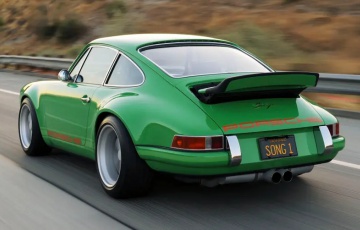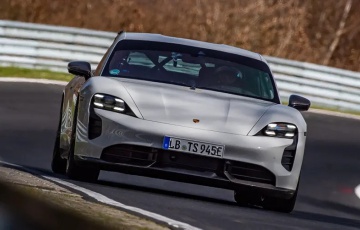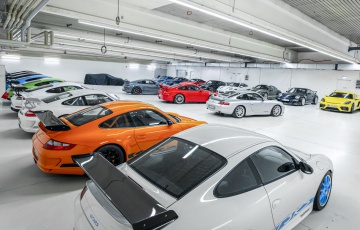Porsche 911 GT3 vs... the Porsche 911 GT3
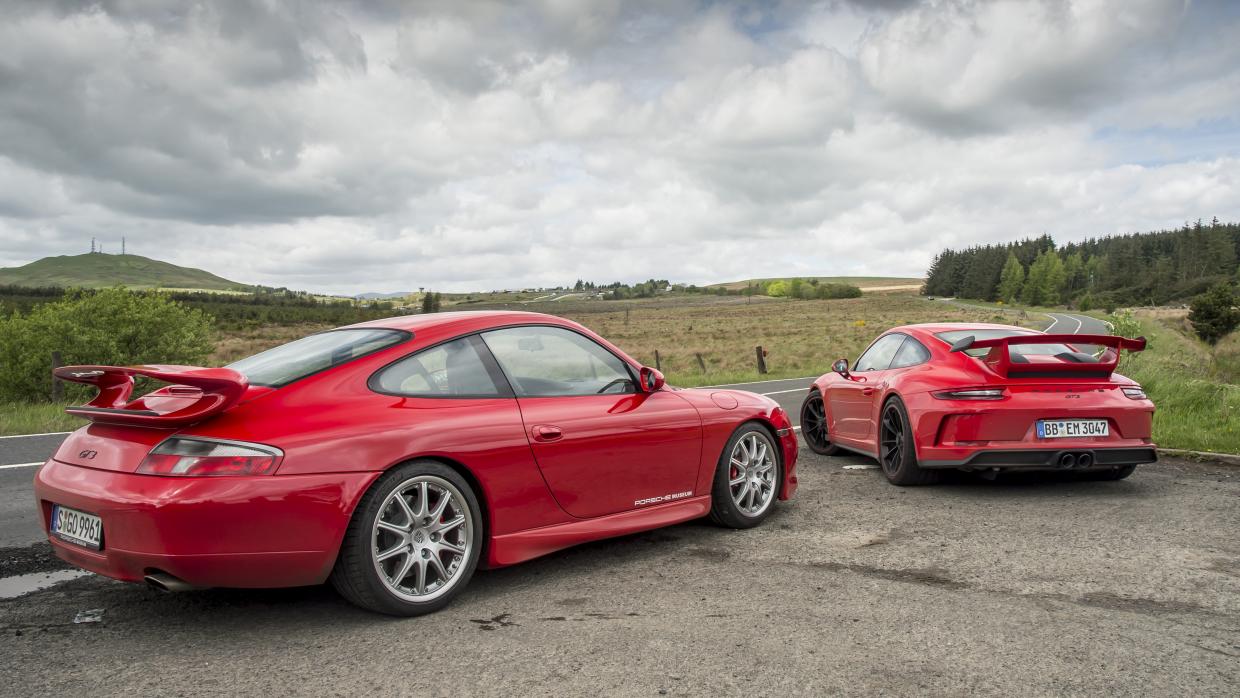
In 1998 Porsche won Le Mans with the 911 GT1. This may seem an irrelevant way to start a story about the GT3, but it reveals just how close the link is between road and race at Porsche and also why the GT3 has such a stellar reputation. Winning Le Mans required a new engine, but the cost of developing it was prohibitive – unless Porsche could use that same engine in its road cars…
This was the fabled Mezger flat-six. In the GT1 it was a 3.2-litre twin-turbo; for the 996 GT3 that arrived the following year, it lost the turbos, had modified heads and a 3.6-litre capacity. And the road car’s influence stretched in other directions – it allowed the homologation of the GT3 racecar, it formed the basis of the Supercup racer. Basically the GT3 was the lynchpin that held Porsche’s motorsport programme together.
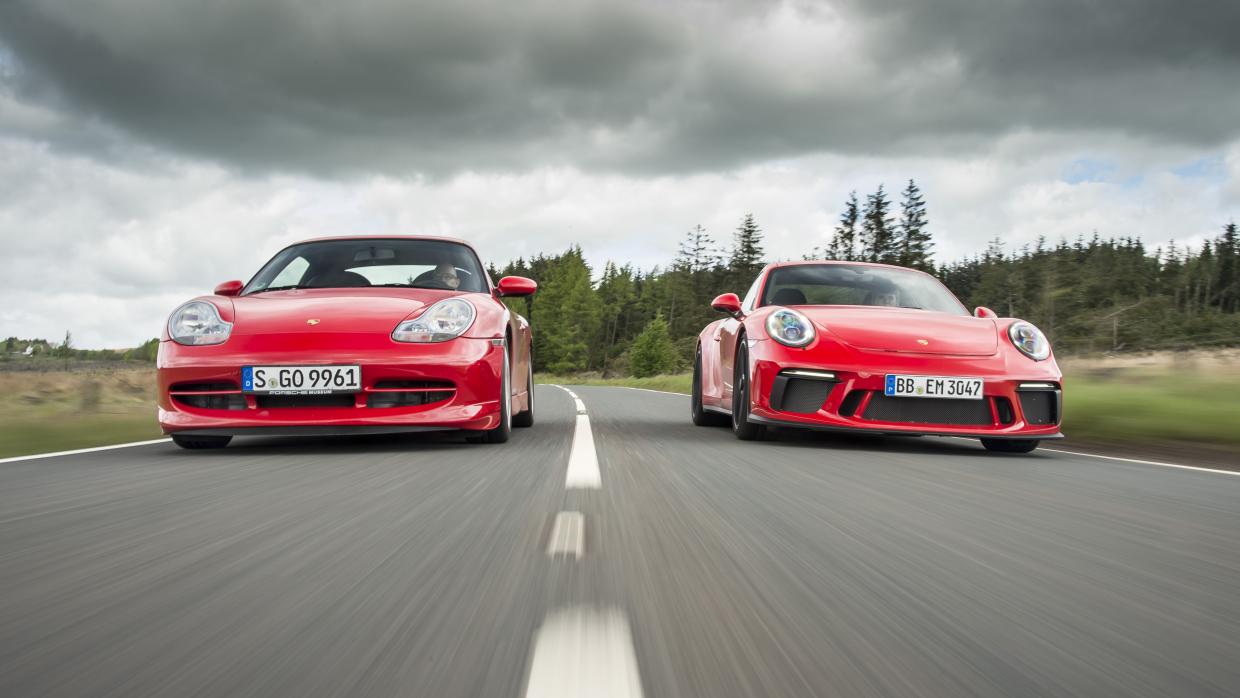
It was also the starting point of a new strategy. Until now, Porsche’s hardcore RS models had been built at the Weissach motorsport centre, but from the arrival of the first GT3 onwards, they would be developed at Weissach but built on the regular 911 production line at Zuffenhausen.
That’s not to say it wasn’t as special – based on the 911 C4 body because it was a bit stiffer than the C2, it had a GT1 crankcase, titanium conrods, dual-mass flywheel, bespoke suspension and so on.
The GT3 badge was new as well, felt to suggest a motorsport vibe, but the car itself was designed to be more in the mould of an RS Touring car – more exciting than a regular 911, but still usable. The RS version itself (lighter, sharper, faster, more expensive) would only come a few years later.
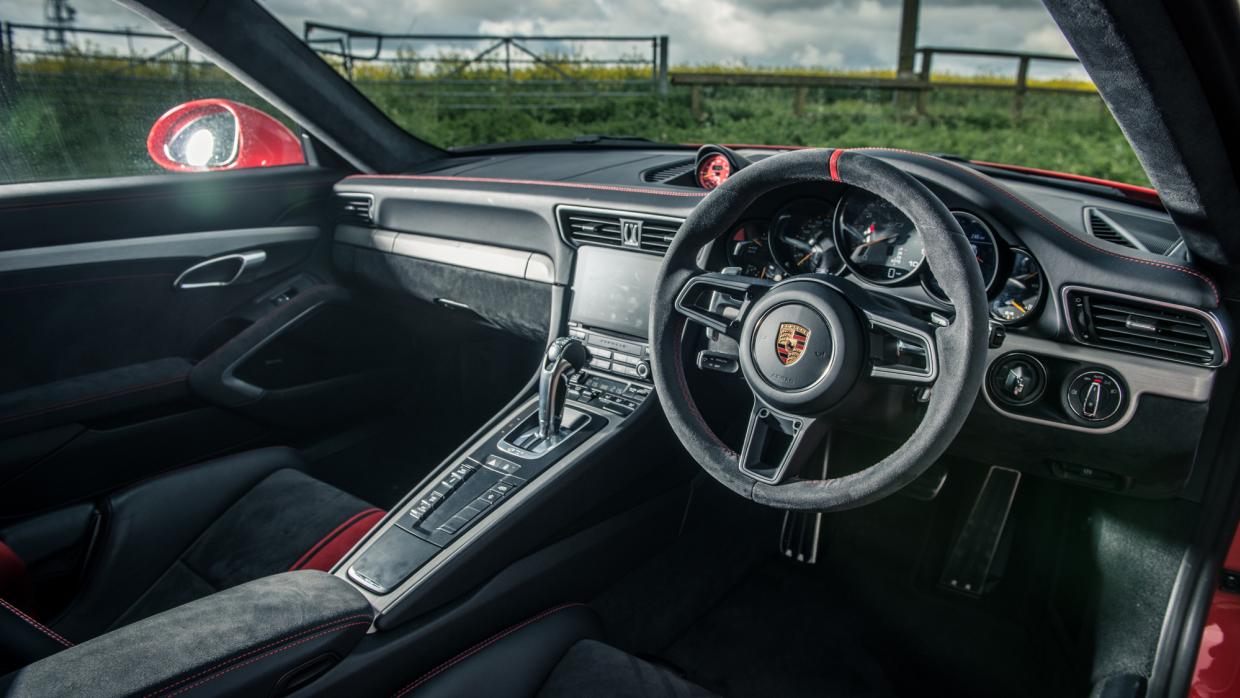
Since the first 996 appeared, we’ve had two generations of 997 GT3, and now the second 991. What’s changed? Well, commendably little in terms of packaging and weight. The latest GT3 is only 130mm longer and 90mm wider than the original and although weight has crept up, it’s only from 1350kg to 1413kg. In almost 20 years, that’s pretty good.
The Mezger engine? Well, that died with the last 997, the famous RS 4.0. But fear not, because the latest GT3 also features a naturally aspirated 4.0-litre flat-six, developing 500hp. And over the years, that’s been the biggest gain – the extra 135hp, fed through rear tyres that are just 20mm wider.
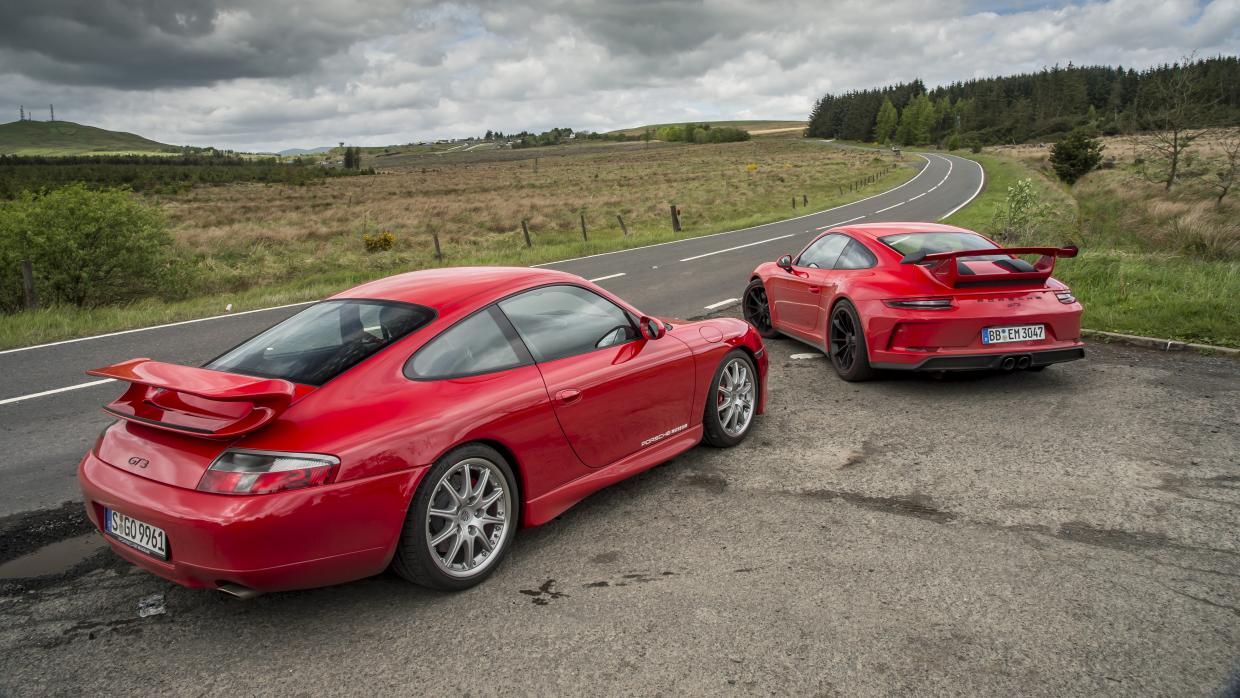
The 996 is decidedly more easy-going. Its engine is crisp, but the power and noise aren’t overwhelming, there’s a little slack in the steering – although feel and adjustability once you get into a corner are wonderful. It’s a calmer, less overtly aggressive car than the latest, but limited to 7,800rpm, can’t get within a thousand rpm of the 9,000rpm newcomer.
In short, the GT3 has gained focus as the years have passed. Driving the 996 now, you sense a slight lack of knowledge about exactly what sort of car this should be back when it was developed. Now Porsche has it locked in.
This is one of the rare examples of a car that has as much tactility, delicacy and feel now as it did 20 years ago. It’s more track-focused now – in fact, the shift from first-gen 991 GT3 to this is considerable. This latest GT3 grips more than is necessary, has way more speed than you need, but at its core the same attributes define both it and the 1999 car: they’re both vast amounts of fun to drive.
STORY Ollie Marriage
1999 Porsche 911 GT3 (996)
Engine: 3600cc flat 6cyl, 360hp
Transmission: 6spd manual, RWD
Performance: 0–100km/h in 4.8secs, 302km/h
Economy: 10.7 l/100km, 320g/km CO2
Weight: 1350kg
2017 Porsche 911 GT3 (991)
Engine: 3996cc, flat 6cyl, 493hp
Transmission: 6spd manual, RWD
Performance: 0–100km/h in 3.9secs, 318km/h
Economy: 10.7 l/100km, 290g/km CO2
Weight: 1413kg






